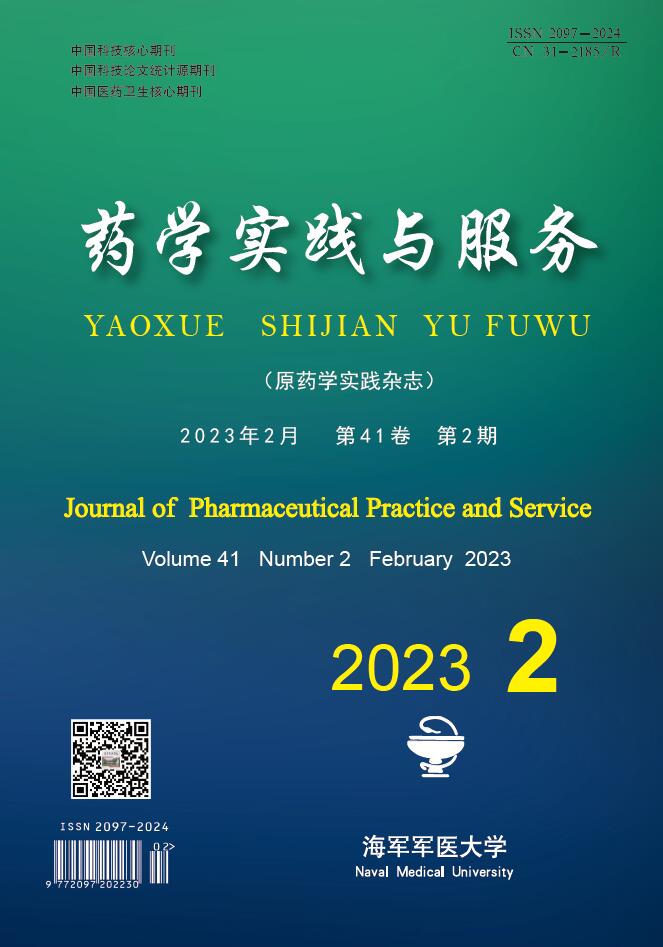-
随着我国社会步入老龄化,接受全膝关节置换术的老年患者逐年增多,而老年患者由于机体耐受力降低,且常常合并多种基础疾病,对手术、疼痛等刺激耐受力较差[1]。近年来,随着加速康复外科理念深入人心,如何减轻老年患者术后疼痛应激成为围术期医学关注的重点。超声引导下股神经阻滞技术是在超声可视化条件下将局麻药注射至股神经旁从而短暂阻断股神经的疼痛传导功能,发挥术后镇痛作用[2]。股神经阻滞麻醉对全膝关节置换术具有镇痛效果确切、对生命体征影响较小、减少阿片类镇痛药及不良反应少的优点,然而由于受局麻药物的半衰期影响其镇痛时间较短,尽管神经周围置管技术能为围手术期进行持续的镇痛管理,可由于导管移位、感染风险增加以及患者的管理具有困难性,使神经周围置入导管的应用受限[3]。研究发现,局麻药中添加佐剂能够延长周围神经阻滞时间,效果良好,包括肾上腺素、曲马多、咪达唑仑、碳酸氢盐、新斯的明、氯胺酮、可乐定等,但各类研究结论不一[4]。地塞米松作为一种类固醇类药物,在慢性疼痛治疗中被广泛应用于外周和中枢。右美托咪定为α2受体激动剂,通过激动突触前膜的α2受体,抑制去甲肾上腺素的释放发挥作用,有拟自然睡眠、镇痛等效果,在临床上得到广泛的应用。本研究旨在探讨地塞米松联合右美托咪定对罗哌卡因股神经阻滞,用于老年患者全膝关节置换术后镇痛效果及其优缺点,为股神经阻滞麻醉的实践提供临床参考。
-
选取浙江中医药大学附属第二医院2019年1月至2020年12月关节外科收治的行全膝关节置换术的年龄在60~80岁老年患者96例进行研究,参照美国麻醉医师协会(ASA)分级为I~III级,手术时间3 h以内,术前评估显示无困难气道的96例患者,术中均采用全身麻醉,术后采用超声引导下股神经阻滞镇痛。排除标准为术前动脉血氧分压低于90%,合并心肝肾功能不全,术中出血量超过500 ml,肺部感染及合并阿片类药物成瘾史。本研究经过医院医学伦理委员会批准。
-
96例患者术后均采用超声引导下股神经阻滞,按照神经阻滞药物的配方分为对照组(C)、地塞米松组(E1)、右美托咪定组(E2)、地塞米松联合右美托咪定组(E3)。所有患者入手术室后常规监测心电图、有创动脉血压、血氧饱和度,开放外周静脉并置管。麻醉诱导方法为:咪达唑仑注射液(江苏恩华药业股份有限公司)0.04 mg/kg静脉注射,枸橼酸舒芬太尼注射液(宜昌人福药业有限责任公司)0.5 μg/kg、丙泊酚注射液(四川国瑞药业有限责任公司)4 mg/kg、注射用苯磺顺阿曲库铵(江苏恒瑞医药股份有限公司)0.3 mg/kg静脉注射,面罩吸纯氧2 min后行喉罩通气。麻醉维持方法为:丙泊酚注射液0.1 mg/(kg·min)、苯磺顺阿曲库铵0.1 mg/(kg·h)静脉泵注,注射用盐酸瑞芬太尼(宜昌人福药业有限责任公司)0.4 μg/(kg·min) 静脉泵注,维持脑电双频指数(BIS)在40~60之间。手术结束后停药,待患者完全清醒后拔出喉罩并进行观察,生命体征平稳后在超声引导下行股神经阻滞镇痛,药物容量均为20 ml。C组神经阻滞药物配方为0.25%罗哌卡因,E1组神经阻滞药物配方为0.25%罗哌卡因+0.2 mg/kg地塞米松,E2组神经阻滞药物配方为0.25%罗哌卡因+0.8 μg/kg右美托咪定,E3组镇痛泵配方为0.25%罗哌卡因+0.2 mg/kg地塞米松+0.8 μg/kg右美托咪定。若术后患者VAS评分>4,则给予单次吗啡静脉注射5 mg镇痛。
-
收集患者的一般情况如性别、年龄、体重、平均动脉压(MAP)以及心率,同时收集4组患者的手术情况如手术时间、出血量、输液量及诱导期咪达唑仑、舒芬太尼用量并进行分析。
镇痛镇静效果评价:收集4组患者术后6、12、24、48 h的VAS评分和术后6 h的Ramsay镇静评分,分析4组患者术后吗啡消耗量及镇痛持续时间。Ramsay镇静评分标准:对强刺激无回应记6分,对刺激反应较弱记5分,睡眠状态但对刺激反应正常记4分,嗜睡且对刺激反应较快记3分,对指令安静配合记2分,躁动不安记1分。
不良反应评价:收集4组患者的呼吸抑制、恶心、呕吐、头晕等不良反应的发生率并进行分析。
-
所有统计学数据均采用SPSS 21软件进行统计学分析,计量资料采用均数±标准差表示,多组之间采用单因素方差分析进行比较;分类变量采用n(%)描述,卡方检验进行分析。P<0.05认为差异具有统计学意义。
-
如表1所示,4组患者的性别、年龄、体重、MAP以及心率等指标均无统计学差异(P>0.05)。
组别 性别
(男/女)年龄
(岁)体重
(m/kg)MAP
(mmHg)心率 C 10/14 73.33±5.85 57.24±8.02 81.40±10.41 82.11±11.76 E1 11/13 69.50±6.09 60.32±10.56 83.28±12.86 83.28±16.15 E2 15/9 69.00±7.48 59.16±6.71 81.44±12.07 79.33±12.19 E3 13/11 69.83±3.06 55.42±10.08 80.22±13.01 80.06±10.82 χ2/F 2.459 0.684 0.437 0.129 0.165 P 0.483 0.572 0.606 0.903 0.925 -
如表2所示,4组患者的手术时间、出血量、输液量及诱导期咪达唑仑、舒芬太尼用量等手术指标均无统计学差异(P>0.05)。
组别 手术时间 (t/min) 出血量 (V/ml) 输液量(V/ml) 诱导期咪达唑仑用量 (m/mg) 诱导期舒芬太尼用量(m/μg) C 127.33±21.39 195.72±29.38 900.00±141.42 1.99±0.16 26.53±2.14 E1 120.39±25.59 186.11±32.98 941.67±91.74 1.86±0.30 24.80±3.99 E2 108.61±16.35 213.33±19.15 916.67±213.70 1.92±0.28 25.60±3.72 E3 119.61±14.98 204.72±39.36 925.00±150.83 1.83±0.24 24.33±3.17 F 1.156 0.084 0.075 0.503 0.503 P 0.351 0.879 0.973 0.684 0.684 -
如表3所示,E2、E3组的术后6 h的VAS评分、Ramsay 评分显著低于C组,E3组的术后12 h的VAS评分显著低于C组(P<0.05),而4组术后24、48 h的VAS评分无统计学差异(P>0.05),说明地塞米松联合右美托咪定能够增强罗哌卡因的镇痛和镇静效果。
组别 VAS评分 术后6 h
Ramsay 评分术后6 h 术后12 h 术后24 h 术后48 h C 2.60±0.55 2.40±0.55 1.20±0.84 0.40±0.55 1.17±0.41 E1 2.00±0.71 1.80±0.84 0.80±0.45 0.20±0.45 1.67±0.52 E2 1.60±0.55* 1.60±0.55 0.60±0.55 0.20±0.45 2.33±1.03* E3 1.20±0.45* 1.00±0.71* 0.60±0.55 0.20±0.45 2.5±0.55* F 5.487 0.027 1.067 0.222 5.062 P 0.009 3.963 0.391 0.879 0.009 *P<0.05,与C组比较。 -
如表4所示,E2、E3组的术后吗啡消耗量显著少于C组,且E1、E2、E3组的镇痛持续时间显著长于C组(P<0.05),说明地塞米松和右美托咪定均能够增强罗哌卡因的镇痛效果,延长镇痛时间,两者合用具有协同效应。
组别 术后吗啡消耗量(m/mg) 镇痛持续时间(t/min) C 10.50±1.87 556.67±56.10 E1 8.17±1.17 664.33±74.68* E2 5.50±1.38* 688.33±48.34* E3 4.67±1.37* 726.67±64.39* F 8.153 9.734 P 0.001 0.004 *P<0.05,与C组比较。 -
如表5所示,4组患者术后呼吸抑制、恶心、呕吐、头晕等不良反应的发生率无统计学差异(P>0.05),说明地塞米松和右美托咪定并未增加患者的不良反应的发生率,安全性较高。
组别 呼吸抑制 恶心 呕吐 头晕 C 0(0) 3(12.5) 2(8.33) 0(0) E1 0(0) 0(0) 0(0) 0(0) E2 1(4.17) 1(4.17) 1(4.17) 1(4.17) E3 1(4.17) 0(0) 0(0) 1(4.17) χ2 2.043 6.261 3.785 2.043 P 0.563 0.099 0.286 0.564 -
随着加速康复外科的快速发展,老年患者的围术期镇痛管理逐渐成为影响患者快速康复的关键之一。下肢手术如膝关节置换术创伤较大,术后常发生剧烈疼痛,因而使患者无法及时进行早期功能锻炼或下床活动,严重延缓其康复进程[5]。以往术后镇痛常采用静脉镇痛或硬膜外镇痛,由于存在呼吸抑制、尿潴留等不良反应,使其临床运用受限。股神经阻滞是近年兴起的镇痛方法,已被广泛运用于下肢手术的术后镇痛[6]。现阶段股神经阻滞镇痛常用的局麻药物为罗哌卡因,存在作用时间短的缺点,而增加药物剂量又易导致局部麻醉药物中毒或其他不良反应的发生增多。笔者通过分析96例全膝关节置换术老年患者的围术期相关指标,发现地塞米松联合右美托咪定作为佐剂能够增强罗哌卡因股神经阻滞的镇痛效果,并能一定程度延长镇痛时间,减少术后阿片类镇痛药物需求量,而不增加围术期相关不良反应的发生率,更加安全有效。
随着可视化技术的逐渐普及,麻醉医师可在超声引导下完成外周神经阻滞,提高阻滞成功率,减少并发症,这促使外周神经阻滞越来越多的应用于术后镇痛[7]。单次股神经阻滞作用时间受局部麻醉药半衰期的限制,其镇痛时间有限。因此,探讨能够增强股神经阻滞镇痛时间的方法对合并基础疾病的老年患者加速康复意义重大。目前已知的可以延长外周神经阻滞时间的方法包括:研发长效局麻药、连续外周神经阻滞技术、佐剂的添加等[8]。脂质体布比卡因作为新的长效局麻药虽然可有效延长外周神经阻滞作用时间,但其价格较高,且同时延长感觉和运动阻滞持续时间,在临床应用受限。同时虽然在股神经周围放置导管可实现连续外周神经阻滞,但同时会增加创伤、感染、神经损伤等并发症的发生,且长时间的连续阻滞需要大量的局麻药,可能会增加毒性反应[9]。研究表明多种局麻药佐剂能够发挥延长外周神经阻滞作用时间等功能,部分药物搭配使用有时会产生协同效应。理想的局麻药佐剂要能够有效延长股神经阻滞镇痛的持续时间,且不增加神经毒性的风险。
地塞米松是一种常见的糖皮质激素,其亲脂性高并且易与细胞外受体结合从而发挥作用,具有强大的抗炎、抗氧化等功能。有研究指出地塞米松减轻疼痛的机制是通过增加C纤维上钾离子通道的活性,抑制炎症介质的合成及释放,从而收缩局部血管,延缓局麻药吸收,使其作用时间延长[10]。右美托咪定作为新型选择性α2肾上腺素受体激动剂,具有良好的镇静、催眠、镇痛与抗交感等作用,对呼吸抑制作用弱,还能减少麻醉与手术引起的交感反射。近年来右美托咪定添加于各种局麻药中用于各类神经阻滞,能够通过减轻机体炎症反应、优化微环境、抑制神经末梢释放去甲肾上腺素、阻断伤害性疼痛信号传导、抑制阳离子超极化等机制增强镇痛效果[11]。因此,地塞米松和右美托咪定可能是较理想的局麻药佐剂。据此,本研究选择罗哌卡因同时复合地塞米松联合右美托咪定用于老年患者全膝关节置换术后的镇痛,结果提示与罗哌卡因单独应用或复合一种药物(地塞米松或右美托咪定)相比,同时复合两种药物(地塞米松和右美托咪定)可进一步延长镇痛作用持续时间并减少术后吗啡的消耗量,不增加不良反应的发生率。Hassan等研究发现布比卡因同时复合地塞米松和右美托咪定用于小儿骶管阻滞麻醉与布比卡因复合地塞米松或右美托咪定相比明显延长了术后镇痛作用时间,降低术后疼痛评分[12]。地塞米松或右美托咪定作为佐剂时,不同的给药途径均可延长局麻药的作用时间。Abdallah和Desmet的研究显示了静脉注射和神经周围注射右美托咪定或地塞米松均可以延长臂丛阻滞后的镇痛作用时间[13-14]。神经周围注射地塞米松的感觉阻滞持续时间较静脉注射地塞米松组延长3.77 h[15],说明了神经周围注射地塞米松在延长神经阻滞镇痛作用时间方面优于静脉注射。Ranjith等研究发现下肢手术中,神经周围注射右美托咪定同静脉注射相比能够显著延长髂筋膜阻滞的镇痛作用持续时间,并减少术后阿片类药物消耗量[16]。Schnabel等对46项随机临床试验共3 149名患者进行Meta分析发现右美托咪定与局麻药复合可使术后镇痛时间延长约5 h,而静脉注射与神经周围注射右美托咪定对镇痛时间的延长作用无统计学差异[17]。
单独应用其中一种佐剂以及两种佐剂联合均可延长超声引导下股神经阻滞镇痛持续时间,这可能与地塞米松抑制炎症介质合成及分泌、使局部血管收缩从而延缓局麻药的吸收,以及右美托咪定激动突触前膜α2受体、抑制去甲肾上腺素释放、终止疼痛信号传导有关,联合应用达到超长镇痛效果这可能是以上两种机制产生的协同作用。同时各组老年患者术后发生呼吸抑制、恶心、呕吐、头晕等不良反应亦无统计学差异,提示两种药物在此剂量下的安全性较好。
综上所述,地塞米松联合右美托咪定能够增强老年患者全膝关节置换术后罗哌卡因股神经阻滞的镇痛效果,且不增加不良反应,更加安全有效,能够为老年患者加速康复外科期间的围术期镇痛发挥重要作用。
Analgesia effect of dexamethasone combined with dexmedetomidine on femoral nerve block with ropivacaine after total knee replacement in elderly patients
doi: 10.12206/j.issn.2097-2024.202109020
- Received Date: 2021-09-03
- Rev Recd Date: 2022-01-24
- Available Online: 2023-07-14
- Publish Date: 2023-02-25
-
Key words:
- dexamethasone /
- dexmedetomidine /
- total knee replacement /
- femoral nerve block /
- analgesia
Abstract:
| Citation: | DONG Fahui, HAN Jingang. Analgesia effect of dexamethasone combined with dexmedetomidine on femoral nerve block with ropivacaine after total knee replacement in elderly patients[J]. Journal of Pharmaceutical Practice and Service, 2023, 41(2): 125-129. doi: 10.12206/j.issn.2097-2024.202109020 |







 DownLoad:
DownLoad: